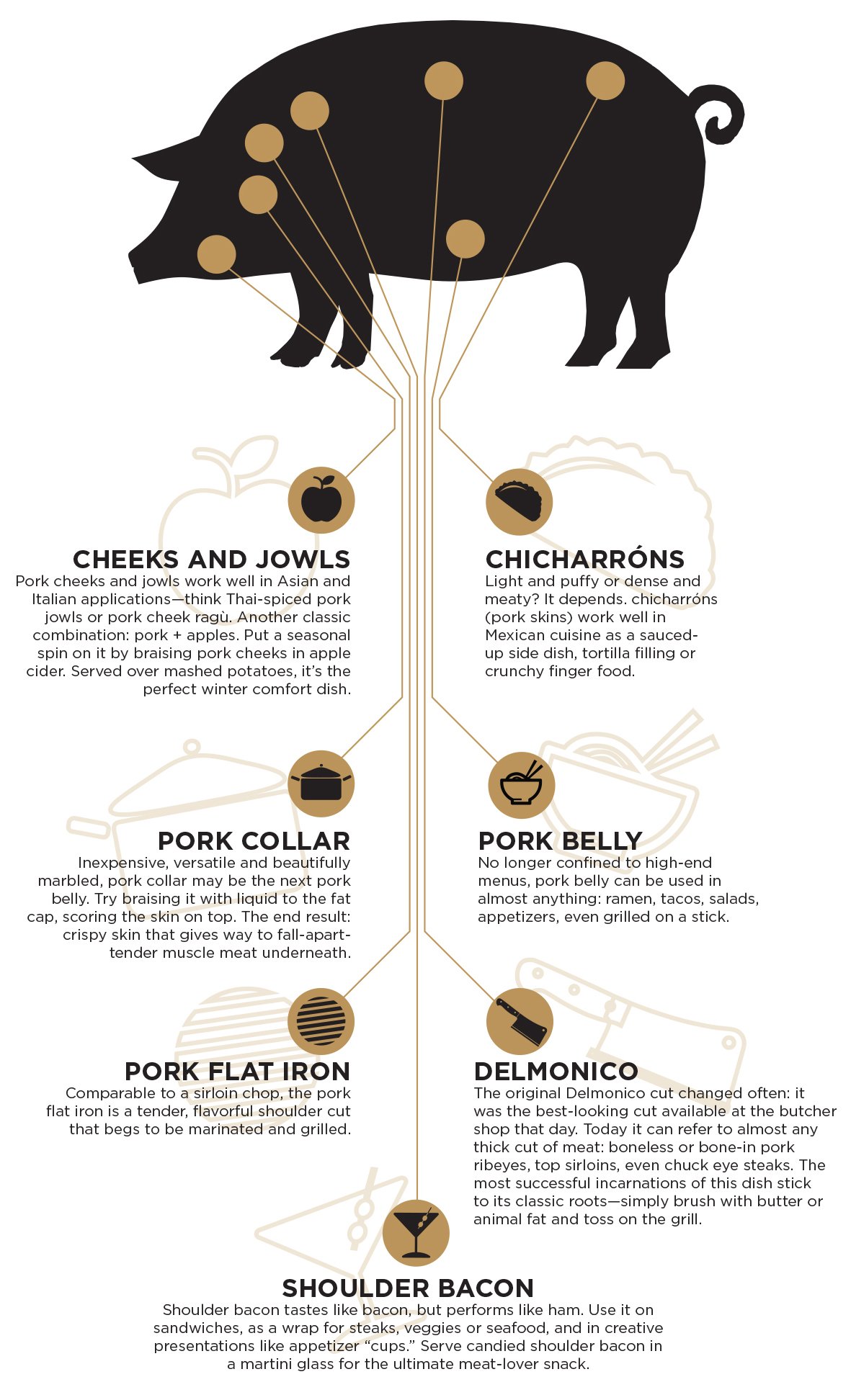According to the National Restaurant Association’s What’s Hot Culinary Forecast, new cuts of meat are a top trend for 2019.
As protein experts, cutters can help operators increase sales and customer satisfaction in several ways. Successful cutters should or will have a finger on the pulse of retail and restaurant trends and provide product education, recipe and presentation ideas, and insight into ever-evolving menu trends. Working in tandem with clients and even other artisan producers, cutters should also be an integral part of an operation’s menu development strategy. Offering a consistent supply of top-quality pork, custom cuts and signature products that aren’t available from broadline distributors can set your business apart.
To help operators stand out from the crowd, showcase alternative, lesser-known cuts that are comparable to their beef counterparts. Think Delmonico, pork flat irons, pork sirloin chops—and of course, the current darling of the food world—pork belly.
“Pork belly started on high-end menus and now it’s found on fast casual and QSR menus,” says Chef Jen Moyer-Murphy, corporate executive chef at Clemens Food Group. “Chefs are not afraid to experiment with new cuts because the modern diner is more globally influenced than ever before. We’re seeing a mash-up of getting back to our roots and using the whole animal, so we’re seeing cuts such as pork skins, pork cheek and pork collar being used on menus.”
Diners are feeling experimental, making this an ideal time to introduce customers to new dishes and flavor profiles that can add excitement to the neighborhood meat counter or spice up the LTO menu. Use this printable infographic as a starting point to educate customers about alternative cuts. Working together, you can bring a whole new world of protein possibilities to the plate.

- Light and puffy or dense and meaty? It depends. Chicharróns (pork skins) work well in Mexican cuisine as a sauced-up side dish, tortilla filling or crunchy finger food.
- Inexpensive, versatile and beautifully marbled, pork collar may be the next pork belly. Try braising it with liquid to the fat cap, scoring the skin on top. The end result: crispy skin that gives way to fall-apart-tender muscle meat underneath.
- Pork cheeks and jowls work well in Asian and Italian applications—think Thai-spiced pork jowls or pork cheek ragù. Another classic combination: pork + apples. Put a seasonal spin on it by braising pork cheeks in apple cider. Served over mashed potatoes, it’s the perfect winter comfort dish.
- Comparable to a sirloin chop, the pork flat iron is a tender, flavorful shoulder cut that begs to be marinated and grilled.
- Shoulder bacon tastes like bacon, but performs like ham. Use it on sandwiches, as a wrap for steaks, veggies or seafood, and in creative presentations like appetizer “cups.” Serve candied shoulder bacon in a martini glass for the ultimate meat-lover snack.
- Shoulder bacon tastes like bacon, but performs like ham. Use it on sandwiches, as a wrap for steaks, veggies or seafood, and in creative presentations like appetizer “cups.” Serve candied shoulder bacon in a martini glass for the ultimate meat-lover snack.
- No longer confined to high-end menus, pork belly can be used in almost anything: ramen, tacos, salads, appetizers, even grilled on a stick.
- The original Delmonico cut changed often: it was the best-looking cut available at the butcher shop that day. Today it can refer to almost any thick cut of meat: boneless or bone-in pork ribeyes, top sirloins, even chuck eye steaks. The most successful incarnations of this dish stick to its classic roots—simply brush with butter or animal fat and toss on the grill.


